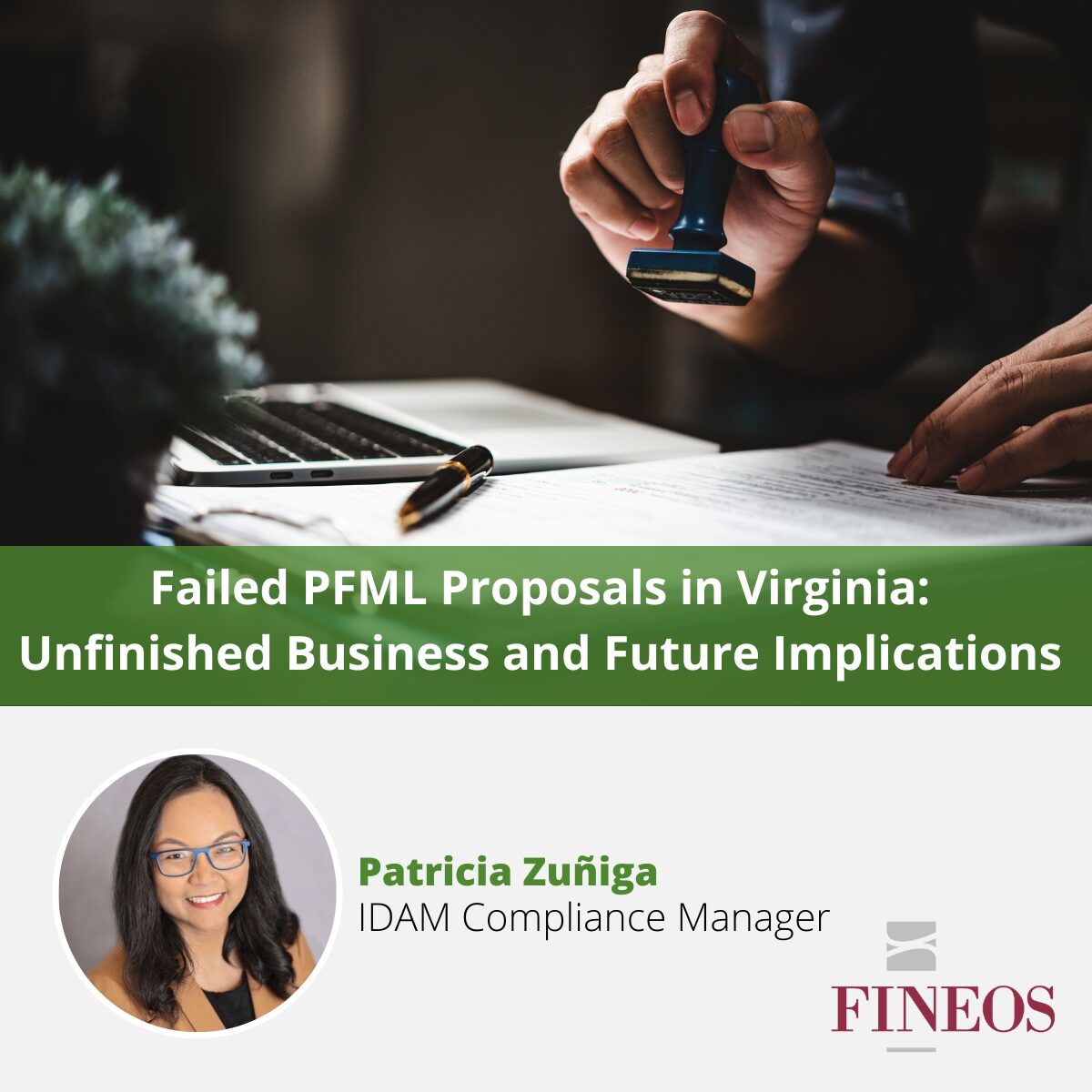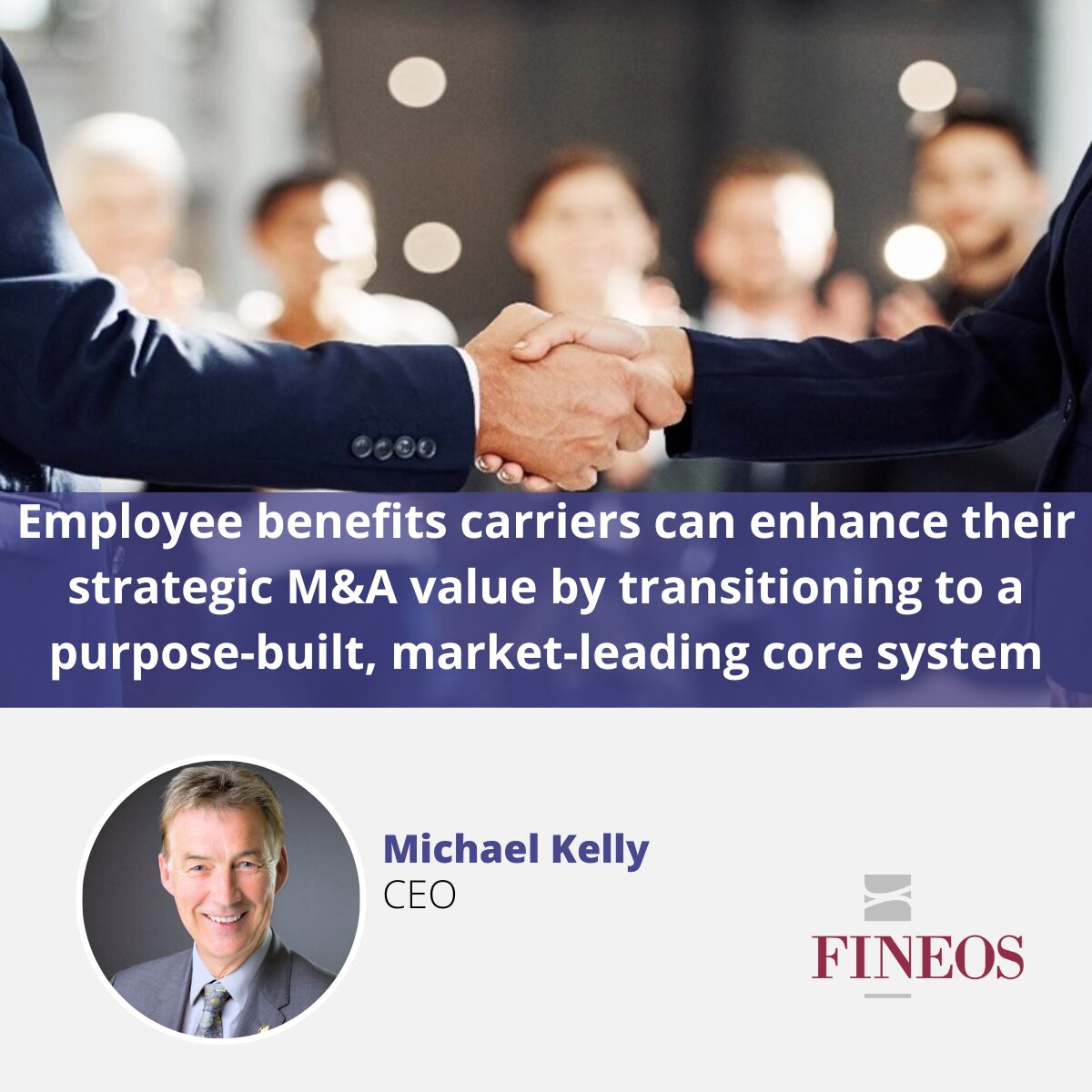At the start of every year, the FINEOS team agrees and aligns on our company objectives, with our goals and key performance indicators (KPI’s) for the year ahead. As the market-leading, modern core platform provider exclusively focused on employee benefits, we take pride in maintaining clarity and alignment throughout our organization. We also reflect on our milestone achievements to quietly celebrate our previous year successes. Last year was a “heads-down” year of focused work to achieve major client and company goals. Three thematic customer success objectives we set and successfully accomplished were:
- Implement FINEOS AdminSuite (new business, billing, policy, claims, and absence) into live production—on time and within budget—for our new Top 10 U.S. SME focused group and voluntary benefits carrier client, supporting their integrated absence, short-term disability (STD) and long-term disability (LTD) product lines.
✔This implementation was completed as planned (stay tuned for an announcement in the coming weeks) - Support New York Life – Group Benefit Solutions in re-entering the voluntary benefits market on its $4B+ group benefits FINEOS AdminSuite production system.
✔Purpose-built specifically for group, voluntary, and absence benefits, FINEOS AdminSuite successfully facilitated a seamless voluntary benefits launch for New York Life – Group Benefit Solutions. - Launch our new, shrink-wrapped FINEOS Absence for Employer product by on-boarding two major employers—one with 40,000 employees and the other with 55,000 employees.
✔The first employer went live in Q3, followed by the second in Q4.
Achieving these three thematic customer success objectives underscores the strength of the FINEOS Platform for Employee Benefits. Today, FINEOS serves 60 global clients, including 40 in North America, where we have a significant client presence in Canada, including two of the top 6 group benefits carriers. Within the U.S., the FINEOS Platform for Employee Benefits is deployed with:
- 7 of the Top 10 U.S. group carriers for claims management.
- 6 of these Top 10 U.S. carriers run our integrated absence and claims modules within our FINEOS AdminSuite.
- 2 of these Top 10 U.S. carriers run our full, end-to-end FINEOS AdminSuite (new business, billing, policy, claims, and absence).
- 1 of these Top 10 U.S. carriers—New York Life – Group Benefit Solutions— operates its entire $4B+ employee benefits business on the FINEOS Platform after eliminating six legacy core systems. Their nine-million-customers for group, absence and now voluntary benefits have been supported for three years on our purpose-built FINEOS Platform.
No other employee benefits carrier—or core systems vendor—has successfully migrated an entire benefits portfolio to a modern SaaS core platform. However, we are seeing a growing number of our clients accelerating in this direction, with measurable improvements in business performance as they expand their new business and transition existing employee benefits portfolios to FINEOS.
Our clients are also beginning to leapfrog one another by adopting and deploying the latest capabilities in the FINEOS Platform. Their ambitions continue to grow as they recognize the potential to deliver true customer-centric living benefits services, launch new products, cross-sell bundled products, and eliminate legacy systems—breaking down silos and bottlenecks to enhance their customer experience and overall operational performance.
Until recently, the employee benefits industry has lacked a clear ‘go-to’ core systems market leader that supports group, voluntary and absence. This means group carriers have had to use point systems and a lot of bespoke integration and front-end software to make up for their core system weaknesses. The vast majority of group core systems in use today were invented before the internet, voluntary benefits, integrated absence, State paid leaves, and the data wave of AI coming! These systems are long overdue to be replaced with a modern core system for employee benefits.
In the past, I’ve written about early-mover employee benefits carriers that struggled by implementing vendor core systems originally designed for other industries, such as property & casualty (P&C) and retirement. With one exception, these carriers continue to face the consequences of these failed initiatives. Some have reverted to a mix of legacy core system renovations and expensive point solutions for various business functions. While this may be smoothing over the cracks of the legacy, time will prove these strategies to be expensive the carriers back in the market.
We believe that failing to transition to a unified, purpose-built modern core platform for group, voluntary, and absence benefits will have negative long-term consequences. As the industry moves further into the data-driven AI era, deeply embedded analytical and generative AI capabilities within purpose-built core systems will emerge as the ultimate differentiator.
According to PwC’s latest CEO survey, more than half (56%) of respondents reported that generative AI (GenAI) has improved employee efficiency, while approximately one-third cited increased revenue (32%) and profitability (34%). Looking ahead, nearly half of CEOs say their top priorities over the next three years include integrating AI—especially GenAI—into their technology platforms, business processes, and workflows.
As you can imagine, three of our major thematic FINEOS objectives for this year will focus on:
- Deepen the integration of Analytical AI to enhance insights and actionable data to improve operational performance across the FINEOS Platform.
- Further embed GenAI so case managers can enhance their decision-making speed and capabilities at critical moments for their customers.
- Expand the openness of the FINEOS Platform for Employee Benefits to support greater client and partner adoption and competitive differentiation.
All our very best wishes for setting and achieving your key company thematic objectives and goals for 2025!


